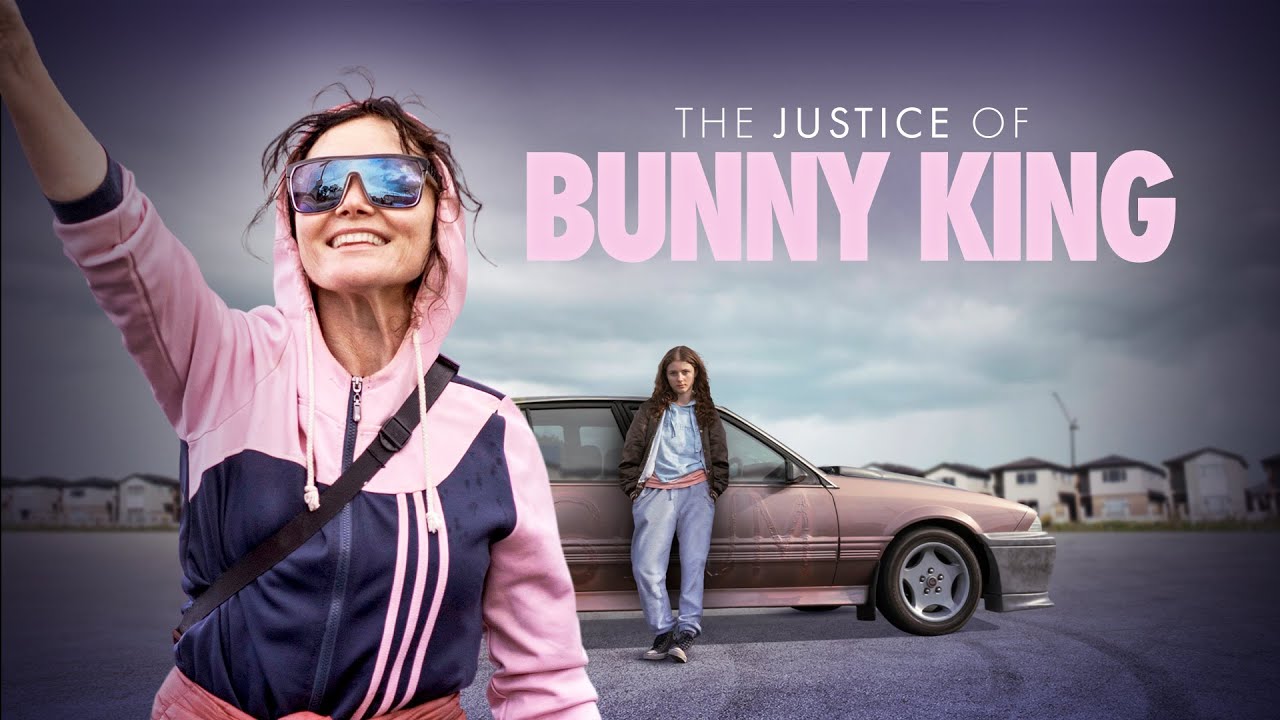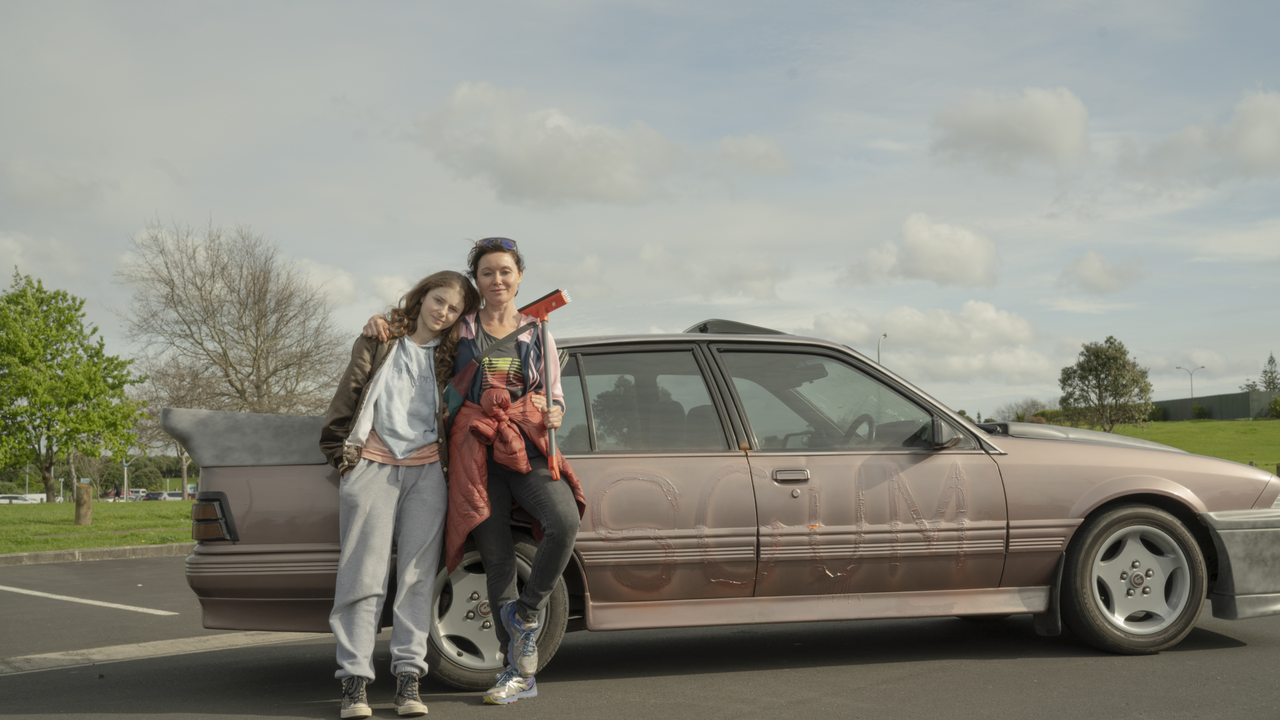Sincere and heart-wrenching, The Justice of Bunny King was one of our favorite films to catch at Tribeca 2021 earlier this year. This film follows Bunny King (Essie Davis), a mother who is trying to regain custody of her two young children from social services. Alongside her niece Tonyah (Thomasin McKenzie) we join Bunny as she desperately attempts everything possible to reunite with them — each moment taking us further down her nervous spiral.
We had the chance to chat with the director of the film, Gaysorn Thavat and dive behind the scenes of the movie!

*This interview has been edited for clarity and length.
Q: How did you first get involved with the project and what of attracted you to it?
A: Well, I first got involved with the project because a writer that I had worked with on my short film sort of suggested he had the story. And the character was a woman called Bunny King, who worked at an intersection washing windows. And I absolutely loved the character and the way that he described her. And the story was quite a different story. And so I said to him, Look, I just love that character, I can’t, I can’t let a cat let her go can’t get her out of my mind. But that the story didn’t quite resonate with me strongly. So I sort of suggested on can we take that character and put her in a in another story. And he agreed. And so we, we worked up an outline, based on new story, which is what eventually became the screenplay. So that was the the genesis of it.
Q: One thing that I love about the film is how it’s really anchored by these very extraordinary female characters. I love that we get to see their rage, disappointment, their fear, and ultimately, by the end of the film, the bond they have with one another. As a director, outside of the screenplay, how did you develop the relationship between each of them?
A: Well, the good thing was that Essie and Thomasin already knew each other that worked together on Kelly Gang. So they were they were familiar with each other, which was great, and already had kind of a working relationship, in terms of developing the bond between those characters. That was always kind of a protective role. Bunny was taking for over, you know, towards Tanya. Because Bonnie is a mother who can’t get a children, having Tanya alongside her allowed us as an audience, to see what a good mother she was, even though, you know, we didn’t get so much of a chance to see her with her own children. By seeing her with Tanya, as an audience, you know, you watch that relationship, and you see what a wonderful person she is, and how much Tonya needs her and relies on her to depend on her and how Bonnie actually does step up. So that bond between them was a really important launchpad for both characters to develop, I suppose, yeah.
Q: Some of the most tense moments in the film kind of take place in one room? What were some of the challenges and maintaining that atmosphere and pacing while staying in same location?
A: I find shooting in one location great, actually, because you can, you know, you can sit up and you can shoot a lot because you’re in a contained environment. It wasn’t really that challenging. I find it more challenging if you have a lot of locations, because you’re constantly on the move and losing time. From a practical filmmaking point of view, staying in one location actually, is great because you can also work with the fact that, you know, towards the end of the film, the characters are locked in one place. So, that sort of frustration of actually being in one location to they can use to enhance, I suppose, or work from that sense of confinement.
Q: You kind of mentioned it a little bit earlier, but this film is heartbreaking, in many ways, because it deals with a real issue that affects a lot of families today. What kind of research did you do while prepping for this film?
A: A lot of it comes from just my own lived experience and that, you know, growing up a lot of my friends had single moms, my mom was a single mom for a long time. So it really just comes from knowing and watching and observing real life, you know, to be honest. In terms of researching the social services, I talked to people who worked within them, just to talk about, find out more about what their systems are and what kind of state that people come in. What their behaviors are when they come and what their systems are so we can sort of try and hit that as accurately as possible. The thing is, you know, there are a women like Bunny everywhere. You know, she’s not an uncommon character, that’s the thing, even though she’s a fictitious character, there are elements of, you know, you’re a woman like money all over the place. So it doesn’t feel like that much of a, you know, the creation of a character didn’t take a huge amount of research, because, you know, he has people that she knows, you know, I have people that I know, from my, you know, from growing up that, that we could draw on that inspiration.

Q: As a director, do you have a favorite sequence or a scene that you’re especially fond of that you work during production?
A: I have a couple. One of them, actually, that’s both scenes where she’s lying. One of them is when she’s trying to pass off to the social worker, that it’s her house, and then the friend’s mother comes home. There’s this wonderful and awful tension where she makes up this story, and then just hopes that the other woman goes along with it. Because she’s a good woman, she does, but then there’s this awful sense of shame that we leave her with. Then she knows she has to leave and then she steals a cake. Part of the reason that seems so fantastic is because of the other actresses in it as well. It was a dream scene to, to work with three excellent actresses. Then the other scene, is the scene where she is in the office, and she’s trying to pass off that she’s somebody else. And she has to lie again. It’s such an excruciating scene, but you see her just carrying on with that with the lie. As an audience, you kind of know what she’s doing, but it’s just sort of heartbreaking and fascinating. All of those emotions that when you’re with a character, it’s so hard to sit with them as they go through that.
Q: Are there any moments that kind of surprised you during filming compared to your short films, or your commercial work, that you weren’t kind of expecting were going to come up?
A: There’s a lot. I mean, if you’re doing commercials, usually there’s enough money for things. When you’re making your first low budget, feature film, there’s never enough money for anything. So that was constantly kind of a battle and struggle, trying to make things work on the resources that you don’t actually have. That was not a nice surprise. What I was surprised by, was the the generosity and commitment of everybody involved. Because otherwise it wouldn’t have been made. You know, people went above and beyond to help this film because they believed that.
Q: I’m always curious to ask about things that got left in the cutting room. Were there any scenes that you that didn’t make the final cut that you really wish could have?
A: There were some things that we lived in the cutting room. Interestingly, they were they were dropped because because of tone. There was one scene that we shot at night. That sort of sort of extends the amount of time for the night that Bunny sleeps rough. We shot it and it was kind of beautiful because it was at night and there was steam and there was nice light reflections. When we put it in the cut, it felt too beautiful. It felt contrived, I suppose, because it felt too pretty. I felt like I could see the fingerprints of me, which I didn’t want to see. I didn’t want to I didn’t want to romanticize or beautify the fact that she was homeless for the night, you know. So it went bye!
Q: Last question. What message do you hope audiences leave the film with?
A: Right, really, I would just love them to love Bunny and have compassion for her. That was my main objective, to grab the audience by the heart and say, “Come with me. I’m going to tell you a story.” Put these shoes on and just have them walk alongside her or walk in her shoes and really experience the story from her point of view. And so hopefully next time people, see somebody like Bunny they don’t necessarily make a moral judgment. Instead, they might wonder what their story is, or what that person’s story is.